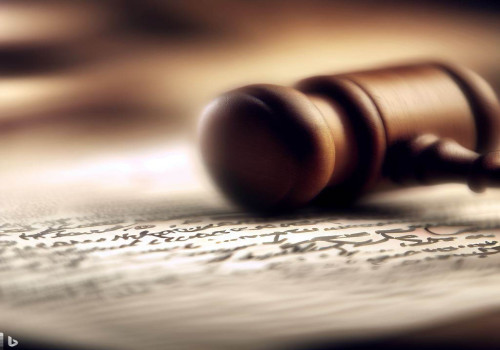
Demystifying the law-making process at the National Assembly
7 months agoOchoche Aje Inalegwu
Section 4 (1) of the 1999 Federal Republic of Nigeria Constitution vests the Legislature with the power to make laws. The Legislature concerns any matter included in the Exclusive Legislative and Concurrent Lists, a list of 12 items on which the National Assembly and States' House of Assembly can legislate. This legislative power is typically exercised through Bills passed by the National Assembly, which are assented to by the President.
Bills generally come in two forms - a Private Bill, which affects private citizens, corporate entities, and a particular class of people; or public Bills, which affect the general public. A Bill can be introduced into either chamber of the National Assembly by members of the respective sections or the Executive arm of government.
Step 1: The drafting of the Bill
Any member of the National Assembly, either from the Senate or the House of Representatives, who has an idea for a law, can draft a bill. These ideas come from the Legislators themselves or everyday citizens and advocacy groups. The primary Legislator supporting the Bill is called the "Sponsor". The other members who support the Bill are called "co-sponsors." Before the Bill is introduced on the floor of the National Assembly, it is given an HB (House Bill) code if it is sponsored by a member of the House of Representatives, and SB (Senate Bill) if a member of the Senate sponsors it.
Step 2: First Reading
Once the Bill is drafted, it is introduced to the floor of the National Assembly. If the Bill is sponsored by a member of the House of Representatives, the Bill is introduced in the House. However, if a Senator sponsors the Bill, the Bill is introduced at the Senate. There is no debate or discussion of the Bill on the floor of the Senate or House of Representatives as this stage, when the legislators are simply informed about the existence of the Bill.
Step 3: Second Reading
At this stage, the members of the National Assembly debate on the general principles of the Bill. A motion is made by the lawmaker, who is typically the Bill's sponsor, to emphasise the subject matter, objectives, benefits, and general principles of the Bill. The Sponsor of the Bill will move the motion that it be read the second time, which must be seconded (i.e. supported) by another legislator in the Chamber where it is being read. If the motion is not seconded, the Bill cannot proceed to " Second reading" and, therefore, will be rejected. After the Bill is debated, it is put to a vote on whether it moves to the Committee stage.
After the debate, the Bill is put to the vote to determine whether it advances to the Committee stage. The Bill goes to the Committee stage if the majority approves it; otherwise, it can only be examined further if it is reintroduced later. The Senate President/House Speaker has the authority to designate the Bill to an appropriate committee if it is referred to the committee stage.
Step 4: Committee Stage
At the Committee stage, the Bill is meticulously reviewed. The House and Senate have various committees composed of members of the Legislature who are particularly interested in different topics such as health or international affairs. Once a Bill has been referred to the Committee, the Committee reviews the Bill and holds public hearings to understand the implications of the Bill better. Public hearings allow the views of the Executive branch members, experts, other public officials and supporters, and opponents of the legislation to be put on the record. After the Public hearing, the Committee reviews the stakeholders' submissions in the Bill. The subcommittee makes changes to the Bill and prepares a technical report.
After the Committee has concluded its work, it will report back to the Senate/House in plenary with or without amendments. The Chairperson of the Committee reports progress on the Bill through a motion. After the Committee submits the report, the Senate/House deliberates on the provision of the Bill, and a motion is moved that the House/Senate adopt the report of the Bill and that the Bill be read for the third time immediately or later.
Step 5: Conference Stage
When the House or Senate passes a bill, it is referred to the other chamber, which usually follows the same route through committees and finally to the floor. This chamber may approve the Bill as received, reject it, ignore it, or change it. When the Bill is passed in both Houses, both Houses form a conference committee to resolve or reconcile the differences between the House and Senate versions of a bill. If an agreement is reached, the committee members prepare a conference report with recommendations for the final Bill. The Bill is then sent to the Clerk of the Legal Department of the National Assembly to clean it up before it is sent to the Clerk of the National Assembly, who then transmits the Bill to the President.
Step 6: Presidential Assent
A Bill becomes law once the President signs it. The Constitution provides that the President has thirty (30) days to sign a Bill sent to them by the National Assembly. If the President does not agree with the Bill's provisions or some of its provisions, the President may refuse to sign the Bill. When this occurs, the President can specify the changes needed before signing the legislation.
Step 7: Overriding a veto
If the President vetoes a bill, the National Assembly may attempt to override the veto. If the Senate and the House pass the Bill by a two-thirds majority, the President's veto is overruled, and the Bill becomes law.
Inalegwu is the Private Sector Liaison for NASSBER. Reach him on ochoche.inalegwu@nesgroup.org